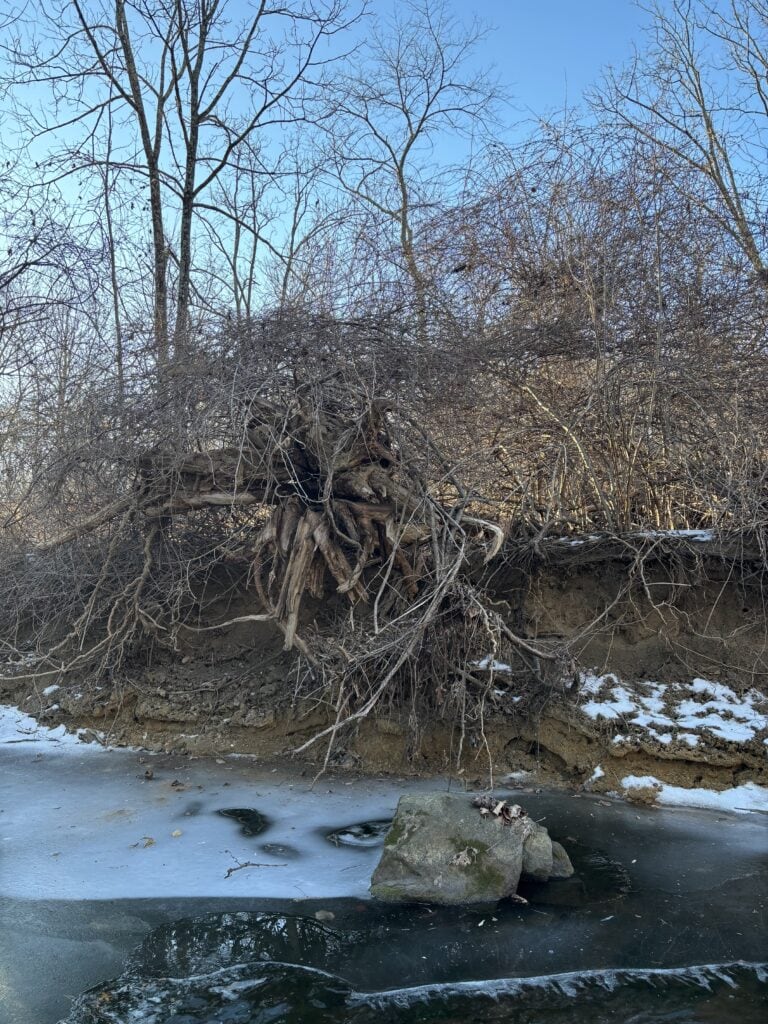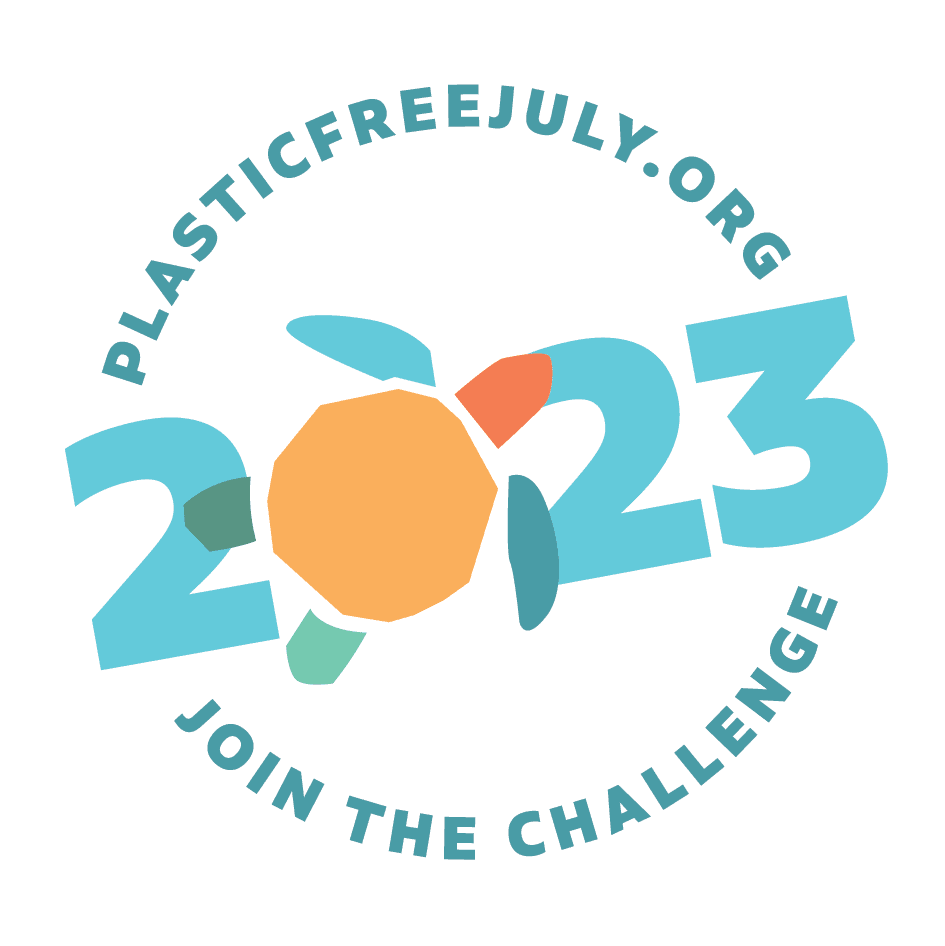By: Sarah Barker
Rivers and streams are very dynamic, changing physically and chemically with every passing minute. Erosion, the process of sediment wearing away over time, plays an essential role in this endless shaping and reshaping. The movement of sediment in freshwater systems is incredibly important for water quality and habitat health. Soil binds to nutrients and salts, trapping them and preventing them from washing into streams. When severe weather events or abnormal conditions carry away large amounts of sediment these pollutants are freed into the water column, impacting wildlife and drinking water. The rate of erosion is also heavily influenced by the amount of development in the surrounding watershed. As land around a stream is developed, runoff increases and erosion worsens.
Often, erosion is considered as a consequence of storms. However, in humid, temperate climate regions like Southeastern Pennsylvania, the most influential form of erosion actually occurs in the winter, called freeze-thaw erosion. This type of erosion happens in natural cycles when extreme differences in temperature, from below freezing to above freezing, occur over a short period of time. As water freezes in the soil it expands, loosening soil particles, when it warms up suddenly after a cold spell this ice melts, creating space between particles and causing them to wear away more quickly. The impact of freeze-thaw erosion worsens after winter rain as the flow of water over already weakened banks accelerates soil loss. Development near water only makes the issue worse, providing hardened surfaces for runoff to speed into flowing water like a race track, bringing more and more loosened soil down with it. It is projected that these freeze-thaw cycles will only increase as climate change continues to modify normal weather patterns towards extremes.

Erosion on the side of a stream bank in Darby Creek.
There are other factors that can contribute to the severity and frequency of freeze-thaw cycles as well. One of the most important is the presence of vegetation along stream banks. Roots hold soil together, slowing erosion in general, however, the density of plants matter too! A 2006 study found that dense plant cover insulates banks from extreme temperature shifts over the course of a day, protecting soil from more frequent freeze-thaw cycles. Stretches of bank without dense canopy or understory were much more vulnerable to daily changes in temperature and experienced as many as four times the number of freeze-thaw cycles as densely planted sections (Wynn & Mostaghimi, 2006).
The local geology and predominant soil type of a region also significantly influence the impact of freeze-thaw erosion. Fine sediment types like clay, silt, or loam tend to be much more susceptible to this process than coarser varieties. In addition, the Piedmont region of Southeastern Pennsylvania is more heavily impacted compared to other kinds of regional geology, like the Atlantic Plain (Inamdar et al., 2018). At Rushton Woods Preserve, an ongoing erosion study documenting the progressive changes within an erosion feature called a headcut may show just how severe freeze-thaw cycles can be when these factors combine.
Starting in June 2024, 40 pieces of rebar, called erosion pins, were hammered into the sides of a headcut at Rushton Woods Preserve to measure the rate of soil movement due to erosion. The study area is mostly fine sediment under a canopy of beech trees, but there is sparse understory to help secure soil. Several recent freeze-thaw erosion events were documented this winter where freezing nights were followed by winter rainfall, leading to rapid movement of soil. Some erosion pins were completely buried in frozen sediment, so that they could not be measured until the next warm day. Data is still being collected, but these winter freeze-thaw measurements are already significant to the study!
Erosion is a complicated natural process, and scientists are still untangling the many mechanisms that may play a role in its impacts. However, there are some things that are very clear. Planting dense vegetation along stream banks combats severe and frequent freeze-thaw cycles. In addition, proper stormwater runoff management is vital for keeping soils stable as winter rainfalls increase in frequency. Freeze-thaw cycles themselves are normal for this area, but it is important to make sure that the rate of erosion doesn’t outpace what local streams can handle. Protecting the land around waterways is essential for healthy habitat and clean water!
References:
Inamdar, S., Johnson, E., Rowland, R., Warner, D., Walter, R., & Merritts, D. (2017). Freeze–thaw processes and intense rainfall: The one-two punch for high sediment and nutrient loads from mid-atlantic watersheds. Biogeochemistry, 141(3), 333–349. https://doi.org/10.1007/s10533-017-0417-7
Luffman, I., & Nandi, A. (2019). Freeze-thaw induced gully erosion: A long-term high-resolution analysis. Agronomy, 9(9), 549. https://doi.org/10.3390/agronomy9090549
Wynn, T. M., & Mostaghimi, S. (2006). Effects of riparian vegetation on stream bank subaerial processes in southwestern Virginia, USA. Earth Surface Processes and Landforms, 31(4), 399–413. https://doi.org/10.1002/esp.1252





